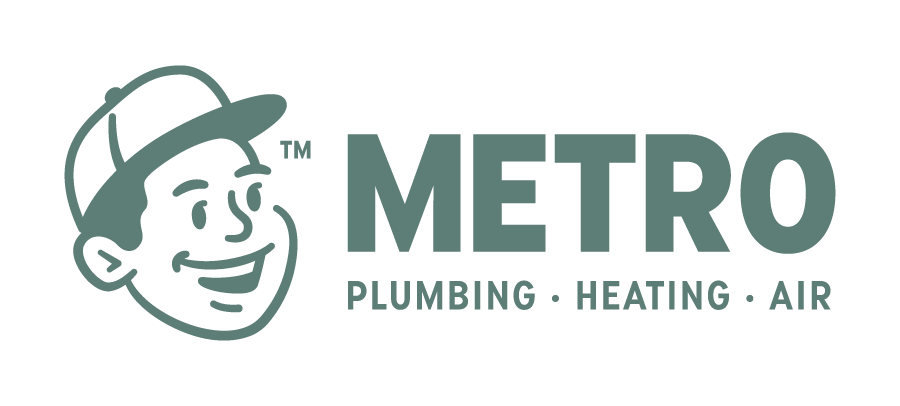Photo By Mariakray at istock
All the wastewater emanating from your bathroom, laundry, kitchen, toilet, and other points in your residential premises, drains into your septic tank. The septic tank that’s hidden in your compound plays a crucial role in ensuring that you live comfortably without any hygiene and sanitation problems.
Your septic tank breaks down organic matter and separates the scum layer, including oils, grease, and solids from the wastewater during treatment through technology and natural processes. This prevents household wastewaters backup and clogging in your drains.
Several factors influence the choice of design and size of your septic tank. These include household size, soil type, the elevation of your site slope, and proximity to sensitive water bodies in the neighborhood as well as weather conditions, lot size, and at times the local regulations put in place.
The best way of taking care of this valuable plumbing component is to carry out septic tank pumping regularly to cope with rising levels of scum and sludge layers. According to the Environmental Protection Agency (EPA) guidelines, household septic tanks should be pumped every three to five years. This allows their restoration to full capacity and maintains their operation at optimal levels, translating to extended lifespan and savings on your maintenance costs.
However, the septic tank pumping intervals provided by the EPA do not always hold up in all homesteads. Thus, you should still be vigilant. But how will you know if it’s time for septic tank pumping? What can you do to minimize the frequency of septic tank pumping at your house in Chattanooga, TN? Well, do not worry. Here are some preventive maintenance measures for your septic tank, including some common indicators that you need septic tank pumping.
Frequent inspection and pumping
As a homeowner, you should have an idea of the physical location, model, and basic functioning of your septic tank. Household septic systems usually consist of a septic tank and a drain field also referred to as a leach field. Soil-based systems discharge the effluent from the septic tank into a series of perforated pipes designed to release the wastewater into the leach field slowly.
Full-scale inspections, at least yearly or semi-annually, allow you to notice wet spots and surfacing sewages in the form of overflows from the lid at the top of your septic tank. You could also look out for septic odors from the drain field areas and inside your house.
When in doubt about the recommended levels of sludge and scum layers, you could always have a septic tank technician inspect them. It’s prudent that you note down the effluent levels to keep track of upcoming septic tank pumping activities.
Sewer backups manifest in pools of water, forming in drains at various user points in your house, indicating a full septic tank. They pose a high risk of water and food contamination when you or other family members come into contact with the wastewater.
In case you encounter any of these signs, be quick to seek a licensed plumbing company with drain cleaning services to run diagnostic tests. If needed, septic tank pumping, to remove undigested waste that accumulates as sludge.
Also, ensure that you keep the records of septic tank pumping activities within reach to help you establish suitable intervals between pumping. The frequency of septic tank pumping in your house could be influenced by the total amounts of wastewater generated, the volume of solids in the sewer, and the size of the septic tank.
Using water efficiently
Did you know that if you’re in a typical single family home, the chances are that each member uses an average of 70 gallons of water daily? We cannot do without cooking, sanitation, laundry, and housekeeping, among other routine cleaning activities that involve water use. EPA also estimates that a running toilet can drain up to 200 gallons of water per day.
These wastewaters navigate through your drainage system, collecting sediments along the pipework, and settle in your septic tank. For this reason, the more water that you conserve in your house, the longer it takes to fill up your septic tank. Besides helping you save on water bills, efficient water use goes hand in hand with household water entering your septic tank, thus longer intervals between septic tank pumping.
There are several options that you could consider adopting to minimize wastages in your house. Your toilet, when operating normally, accounts for at least 25 percent of household water use. You could resolve to switch to high-efficiency toilets that require significantly less water per flush, especially compared to their counterparts in older homes.
The same principle is useful with faucet aerators and showerheads. Another option worth considering is running only proper loads of laundry in your washing machine distributed throughout the week. This is quite straightforward, in that, running small or improper-load cycles not only wastes water but also raises your energy consumption.
Doing all your laundry at a go overwhelms your septic system and could flood your drain field, thus accelerating the need for septic tank pumping. It may seem appealing in saving time, but it deprives the system of the time required to treat waste, including efficient separation of solid wastes.
Proper waste disposal
Regardless of the point of entry, materials that find their way in your drain pipes end up in the septic tank. The nature of these waste materials dramatically affects your sewer system’s functioning, mainly the septic tank pumping frequency.
Most inorganic materials are non-biodegradable, hence hampering your septic tank’s ability to treat waste. On the other hand, organic materials are way easier to break down; therefore, friendlier to your septic tank. Bacteria present in the sewer system helps decompose solid waste materials. The need for septic tank pumping arises when the rate of solid waste deposition exceeds microbial action inside the tank leading to the accumulation of sludge.
As a homeowner in Chattanooga, TN, you may probably acknowledge that your toilet, in most instances, plays victim to poor garbage disposal practices. Cigarette butts, feminine hygiene products, baby wipes, condoms, pharmaceuticals, and household chemicals are everyday items with a high probability of getting flushed.
Kitchen and shower drains are also susceptible sites for dumping cooking oil, food leftovers, and coffee grounds as well as accumulation of hair, soap leftovers, and other waste debris. When large quantities of these materials make their way into your drainage, they interact, thus increasing the chances of forming clogs in your drain pipes.
Partial blockages lead to slow drains that gradually transform into sewer backups, and you may have witnessed this scene in the form of having trouble in flushing your toilet. At times, the garbage waste settles in your septic tank to form a colossal sludge layer. Poor garbage disposal increases your maintenance costs for issues related to plumbing, including septic tank pumping.
Not to worry, though. There are some basic practices that you could integrate into your residential premises to help minimize the level of solid materials entering your septic tank. Ensure that you label all waste bins in your household correctly and conspicuously.
The visual effect is the right trigger for the proper garbage disposal, even amongst the younger family members. Another preventive measure is installing and replacing drain filters to trap most solid waste likely to find its way accidentally.
You can also prevent toilet clogs and backups by ensuring that you only flush toilet paper and human waste. This may seem pretty straightforward. However, it can be challenging if you have little children. Also, do not drain chemicals, including paints, expired drain cleaning agents, grease, and other toxic products, since they destroy the beneficial bacteria that act on solid waste in your septic tank.
Maintain your drain field
A drain field removes contaminants and impurities from the effluent emanating from your septic tank after digestion. The leach field delivers wastewaters to the underlying soil, which acts as a filter for purification before it mixes with adjacent surface waters or groundwater.
Poorly maintained drained fields and septic sewers, in general, could contaminate groundwater and even release hazardous waste into local waterways, which is detrimental to the well-being of all members of the community. The presence of wet spots or too green grass could be a clear sign of solid waste in the leach area.
The excessively lush lawn is a result of the intake of nutrient-rich waste leaking from your septic tank. This can be solved through septic tank pumping before it clogs the entire drainage system, costing you a lot more. Just as the old saying prevention is better than cure, ensure that you have filters installed in strategic positions in your septic system to keep off large particles from settling in the leaching area.
Other measures on your drain field include no livestock, parking, driving, or operating heavy machinery in the area and ample protection against runoffs, sump pumps, roof drains, and other rainwater drainage systems.
It’s recommendable that you use grass to cover your leach field instead of asphalt or plastics that hamper oxygen from penetrating the soil. Oxygen creates a conducive environment for aerobic decomposition; thus, the bacteria aiding this process has a chance of thriving.
If you like having trees in your compound, you should first check with a septic service professional to advise you on the proper distancing that does not interfere with your drain field. Your drain field should be designed to occupy an area with adequate soils, gentle slopes, and a low water table.
As a homeowner, you can gain a lot from certified plumbing companies in Chattanooga, TN, offering septic tank pumping services. Professionals could guide you on administering bacterial additives in your sewer system and keeping it running smoothly.
With advancements in technology, some septic systems are fitted with alarms to notify homeowners when there is a need for septic tank pumping. If you’re struggling with keeping records or upgrading, you can consider hiring a plumbing company to assist with installing alert systems.
There are far-reaching benefits of having a well-maintained septic tank in your house. It saves you money in terms of repair costs, protects the environment, and safeguards your neighbors’ health.
Sometimes, you may be faced with the need to relocate to another area or even state due to job obligations or some other reasons. Keeping your septic tank in good shape can prove to be an asset in the sense that it increases your septic tank’s lifespan, dramatically adds value to your property, and makes your house comfortable to live in.
To install a septic system at your home in Chattanooga, TN, you’ll need to have a permit, granted by the Tennessee Department of Environment and Conservation. Hiring a professional plumbing company to carry out regular inspections, septic tank pumping, and maintenance on your septic system will help you adopt new practices, adhere to safety protocols, and detect and mitigate leakages.
Also, ensure that you have the appropriate personal protective equipment to cover your hands, eyes, face, and clothing when performing routine maintenance activities on your septic system due to the health risks involved.
Give us a call
A corrupt septic system will mess up the normal functioning of your house and inconvenience your family and guests. Get a plumber who can do something about it. Metro Plumbing, Heating, and Air homeowners in Chattanooga, TN, have the equipment, expertise, and the speed to ensure your septic tank is in top-notch condition.
We’re experienced in providing storm drain cleaning, sewer line repair, septic tank pumping and sewer, and maintenance services. Our team licensed plumbers work on a 24/7 basis to restore normalcy when faced with septic tank issues. Don’t get stuck with a damaged Septic tank. Give us at Metro Plumbing, Heating & Air a call, and we’ll show up on time.




